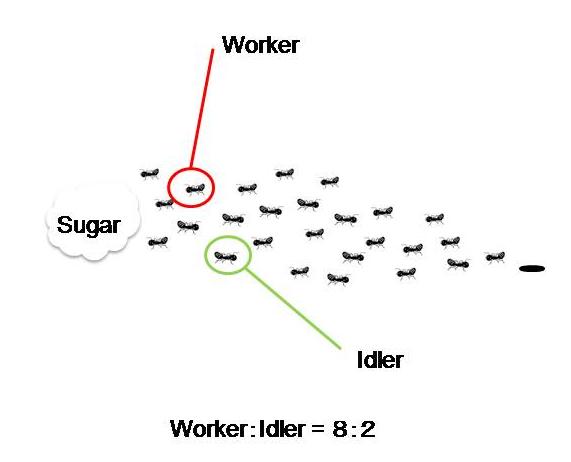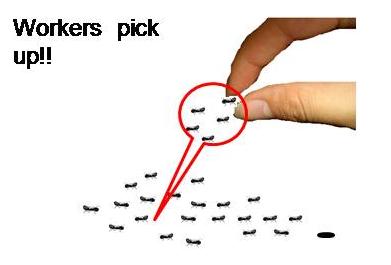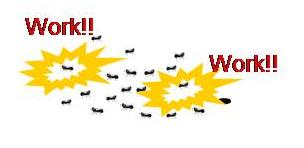Tokyo/Concepts
From 2007.igem.org
| Line 6: | Line 6: | ||
<br>What would happen if all the actual workers were removed? Would some of them start to work? If this is the case, we could expect that some of them, for example 20% again, start to work while the others remain lazy. It seems that only 20% of the workers contribute to the most part of work. | <br>What would happen if all the actual workers were removed? Would some of them start to work? If this is the case, we could expect that some of them, for example 20% again, start to work while the others remain lazy. It seems that only 20% of the workers contribute to the most part of work. | ||
| - | [[Image:Pick up.JPG]][[Image:Work.JPG]] | + | [[Image:Pick up.JPG]] ⇒ [[Image:Work.JPG]] |
Revision as of 19:49, 22 October 2007
Worker Ants
Division of labor is well established in an ant society and there are workers serving for their queen, her children, and the whole group. Though named “worker,” it has been revealed that all of them are not necessarily working. The working population is about 20% while the rest 80% are not and look idlers.

What would happen if all the actual workers were removed? Would some of them start to work? If this is the case, we could expect that some of them, for example 20% again, start to work while the others remain lazy. It seems that only 20% of the workers contribute to the most part of work.
This 80:20 phenomenon – phenomenon that 80% of the effects comes from 20% of the causes – is empirically found in many cases in nature as well as human societies and called Pareto’s principle.
Stimulated by this phenomenon, we set our goal to establish a bacterial society following Pareto’s law – a society consisting of worker and idler Escherichia coli. Here all E. coli having the same genetic components become workers or idlers. When all workers are removed from the society, some of the idlers start working.

